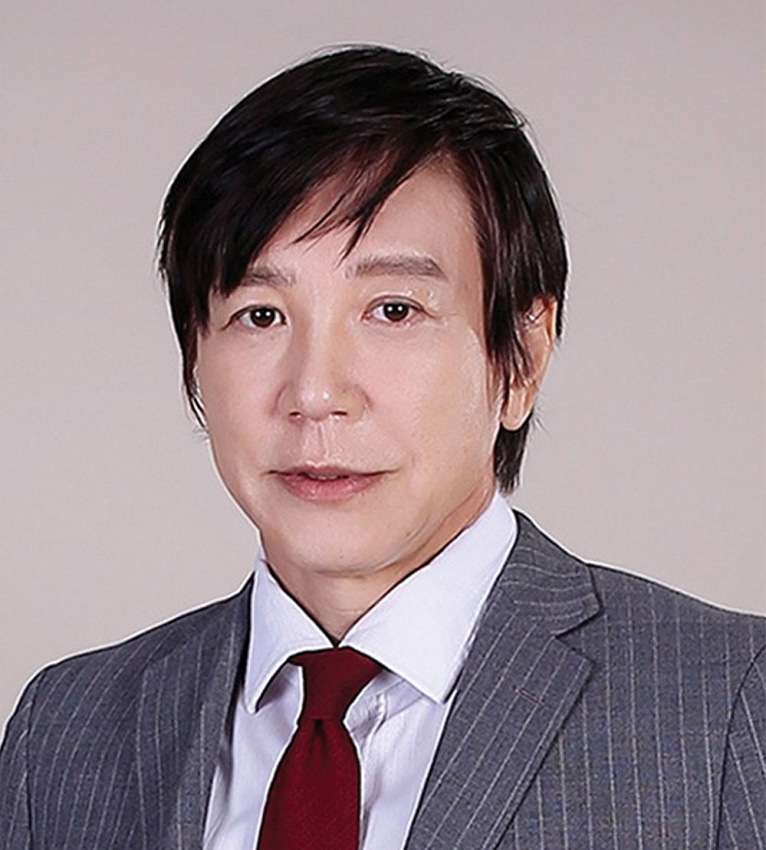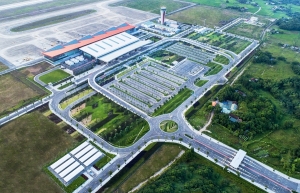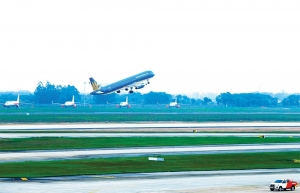Funding essential for domestic airport expansions
Cities and provinces in Vietnam are trending to develop an airport to support their socioeconomic development. How important is an airport for this type of development?
 |
| Nakajima Takeo, chief representative of the Hanoi Office of the Japan Trade Promotion Organization and vice president of the Japanese Chamber of Commerce and Industry in Vietnam talked |
Airports are essential in attracting investment from global companies. Businesses consider an international airport's size, convenience, and direct flights as critical criteria for investment decision-making.
According to one Japanese airline representative, the total designed capacity of Vietnam's airports is currently 90 million passengers annually. Before the pandemic hit, the airports had already exceeded capacity. By 2030, the passengers' number may reach 280 million, based on the estimate.
Vietnam has 12 international airports, among which Tan Son Nhat and Noi Bai are overloaded and stressing passengers - with frequent flight delays and crowded and uncomfortable facilities such as airport counters, bathrooms, restaurants, ground services, and parking.
Last month, Indonesia’s Soekarno Hatta Airport was ranked the busiest airport in Southeast Asia, Tan Son Nhat second, and Noi Bai seventh, according to research firm OAG. These airports are jam-packed.
In addition to expanding the two largest airports in Vietnam, it is necessary to enhance other airports. Van Don International Airport in Quang Ninh is a modern civil airport in the north. Due to its distance from Hanoi, Noi Bai’s runway and passenger terminal expansion are inevitable.
In the south, there are high expectations for the expansion of Tan Son Nhat and the brand-new Long Thanh International Airport in Dong Nai province, scheduled to be built by 2025.
ASEAN neighbours also rush to expand or build new airports. Bangkok’s Suvarnabhumi and Don Mueang, Indonesia’s Soekarno-Hatta and Halim Perdanakusuma, and Singapore’s Changi International Airport are undergoing runway and terminal expansion to attract tourists and foreign capital.
What lessons should Vietnam learn from Japan to successfully develop airports?
Japan has spent many years developing today’s infrastructure. Narita, Haneda, and Chubu airports are high in world-ranking surveys, but they took a long time to upgrade. Land acquisition was also time-consuming and expensive.
Global international passenger traffic tripled from 600 million in 2000 to 1.9 billion in 2019. It stagnated in 2020 and 2021 but is expanding again. Most airports in Europe and the United States are also highly congested now, and construction cannot keep up with the speed of people travelling worldwide. Although Vietnam has not appeared in any “poor” rankings, its airports will soon exceed capacity.
Japan’s major airports are transforming into places where people have a relaxing, enjoyable time. Not only restaurants and shopping, but they have an observatory, nursery, children’s playground, showers, clinics, massages, esthetics, home delivery, and hotels. People can also enjoy arts, exercise, exhibitions, and entertainment at the airports. Airports are the first thing foreigners see when they land in a country and their experience may impact their impression of the country as a whole.
Based on Japan’s experience, operating small regional airports is challenging if they are relatively close to major airports. For example, Tuyen Quang is 2-3 hours by car from Hanoi, not too far from Noi Bai. It is unclear how the province can add value to its airport if built. Airports in remote areas where few users will come are also challenging.
Some experts say Japan has too many airports, with more than 90. I am not sure how many airports Vietnam needs, but first and foremost, they need to expand and upgrade their cramped airports in Hanoi and Ho Chi Minh City.
What are the opportunities for Japanese companies in airport development in Vietnam?
International business entities should participate in building advanced airport facilities and operations. State-owned enterprises operate many airports in Vietnam. The quality of services in restaurants, shops, and security checks is unsatisfactory.
In the case of Van Don International Airport in the northern province of Quang Ninh, however, the private sector invests in airport development and its quality services.
In terms of transport, in developed countries rapid trains, subways, highways, and express buses link travellers and domestic destinations, making the mass transition possible.
Meanwhile, the growth of e-commerce, fast delivery, lean inventory, and other economic demands call for intelligent air freight infrastructure. Recently, some airports even introduced autonomous driving and robot services to welcome visitors and demonstrate the country's technologies. An open concession will attract unique services from abroad.
 | Serious lessons to take on board for Vietnam’s airport development targets Cities and provinces in Vietnam are rushing to develop more airports to support their socioeconomic development. Juergen Weber, chairman of the European Chamber of Commerce in Vietnam’s Transportation and Logistics Sector Committee, talked to VIR’s Bich Thuy about the importance of airport development to a locality. |
 | Lai Chau Airport may be invested in with PPP The Ministry of Transport (MoT) has just sent an official dispatch to the prime minister and Lai Chau People's Committee on the investment in Lai Chau Airport, which is to be constructed under the public-private partnership (PPP) format. |
 | More airports in need to aid aviation sector's growth prospects Building more airports proves important to keep abreast with the aviation sector’s upbeat growth prospects. |
 | Linking the skies with upgraded aviation infrastructure Several nations have devoted generations to constructing sophisticated aviation infrastructure as an economic launchpad. In Vietnam, plans are in the making to follow suit and upgrade the nation's airport infrastructure to serve the ever-increasing demand. |
 | Airport plans depend on investment Vietnam’s ambitions to transform its airport infrastructure will have to deal with various challenges in attempting to attract private investment. |
What the stars mean:
★ Poor ★ ★ Promising ★★★ Good ★★★★ Very good ★★★★★ Exceptional
Related Contents
Latest News
More News
- Partnerships drive sustainable finance (January 07, 2026 | 09:23)
- FDI inflows reach $38.42 billion in 2025 (January 06, 2026 | 17:55)
- $2.1 billion Nghi Son LNG-fired thermal power plant waits for investor (January 06, 2026 | 17:51)
- GE Vernova powers up Vietnam with first 9HA gas power plant in the country (January 06, 2026 | 16:54)
- Solid finish for manufacturing after volatile year (January 06, 2026 | 08:50)
- Meiko strengthens Vietnam operations with new PCB plants (January 06, 2026 | 08:49)
- Ho Chi Minh City backs $2 billion AI data centre with dedicated task force (January 06, 2026 | 08:43)
- PM sets January deadline for high-speed rail consultant (January 06, 2026 | 08:40)
- New decree spurs on PPP implementation (December 31, 2025 | 19:01)
- Global alliance develops $1 billion AI data centre network in Vietnam (December 30, 2025 | 10:08)

 Tag:
Tag:




















 Mobile Version
Mobile Version